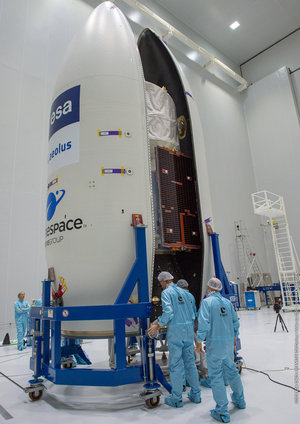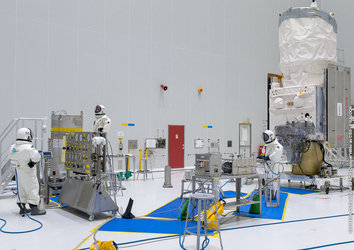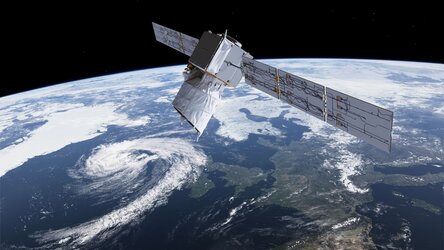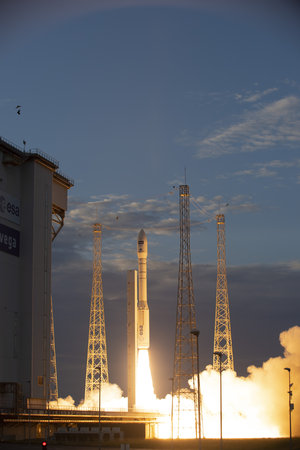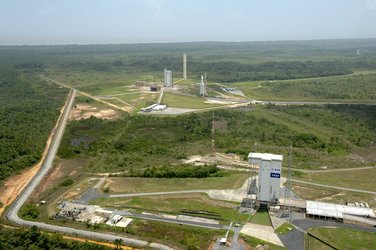Aeolus in launch tower
ESA’s Aeolus wind satellite is poised for liftoff from Europe’s Spaceport in Kourou, French Guiana. This latest Earth Explorer satellite has been at the launch site since early July being readied for its ride into space on 21 August at 21:20 GMT (23:20 CEST).
Aeolus was sealed from view in its Vega rocket fairing last week, after which it was rolled out to the launch pad, hoisted into the launch tower and joined to the rest of the rocket.
Like all of ESA’s Earth Explorer missions, Aeolus will fill a gap in our knowledge of how our planet works and show how novel technology can be used to observe Earth from space.
Aeolus carries one of the most sophisticated instruments ever to be put into orbit.
The first of its kind, the Aladin instrument includes revolutionary laser technology to generate pulses of ultraviolet light that are beamed down into the atmosphere to profile the world’s winds – a completely new approach to measuring the wind from space.

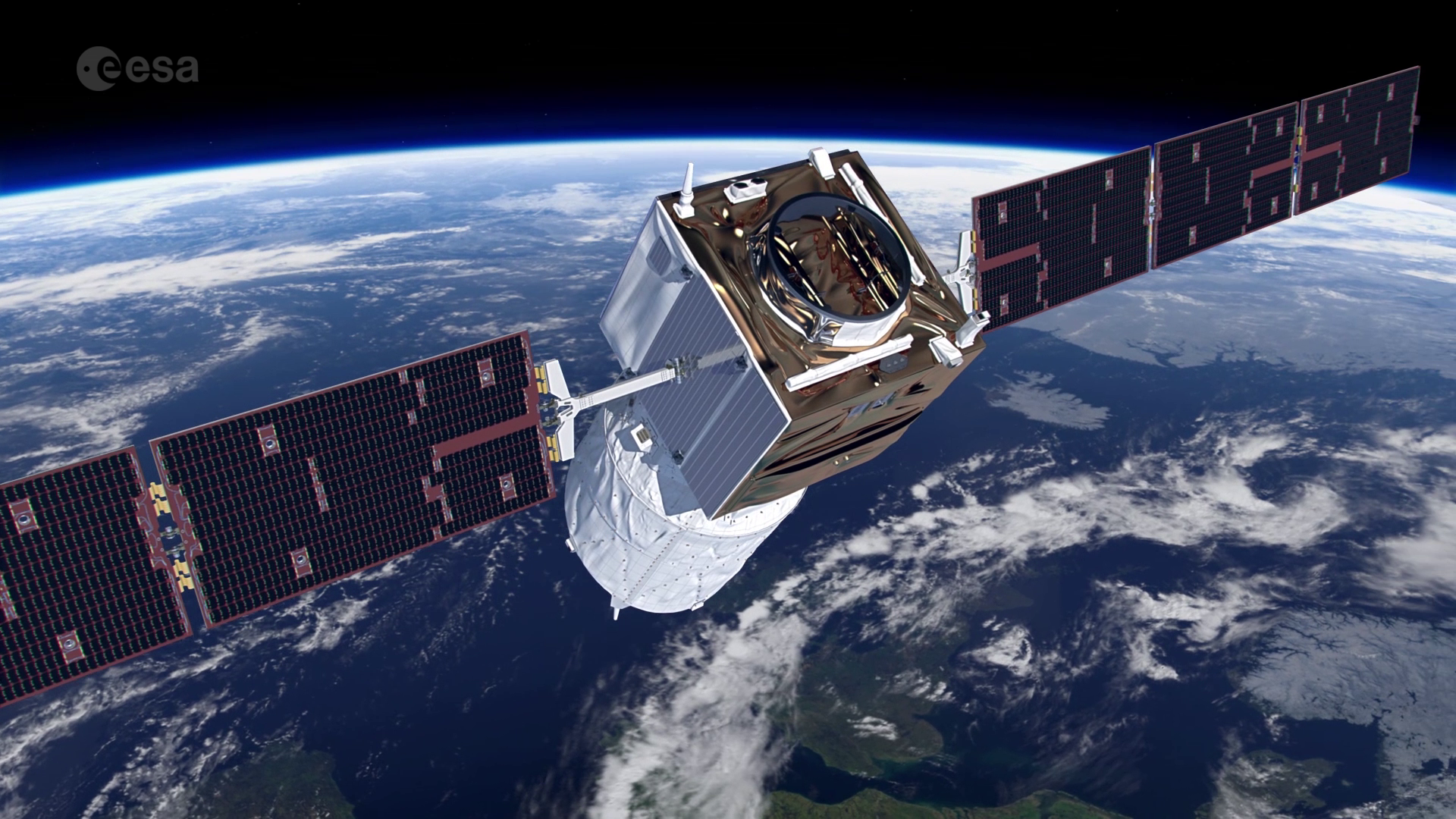
Access the video
This technology has been particularly challenging to develop and consequently it has taken some years to get this far.
ESA’s Director of Earth Observation Programmes, Josef Aschbacher, said, “Aeolus has certainly posed some technical challenges, but after all it is completely new – the wind has never been measured from space this way before.
“Aeolus is set to be a game changer for understanding the dynamics of our atmosphere and it will have real-world applications by being used to improve our weather forecasts.
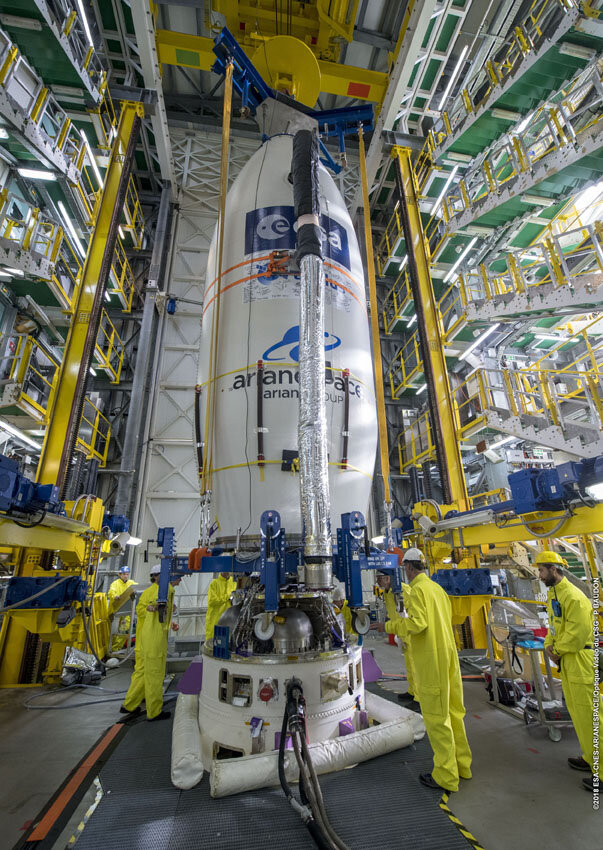
“The development path may have been somewhat rocky, but we are all thrilled to see it now in the launch tower awaiting its big day.”
By profiling the lowermost 30 km of the atmosphere, Aeolus will give scientists global information on the speed of the wind in near-real time.
This will improve our understanding of how wind, pressure, temperature and humidity are interlinked.
This new mission will also provide insight into how the wind influences the exchange of heat and moisture between Earth’s surface and the atmosphere. These aspects are important for understanding climate change.
As well as advancing science and improving weather forecasts, data from Aeolus will be used in air-quality models to improve forecasts of dust and other airborne particles that affect public health.

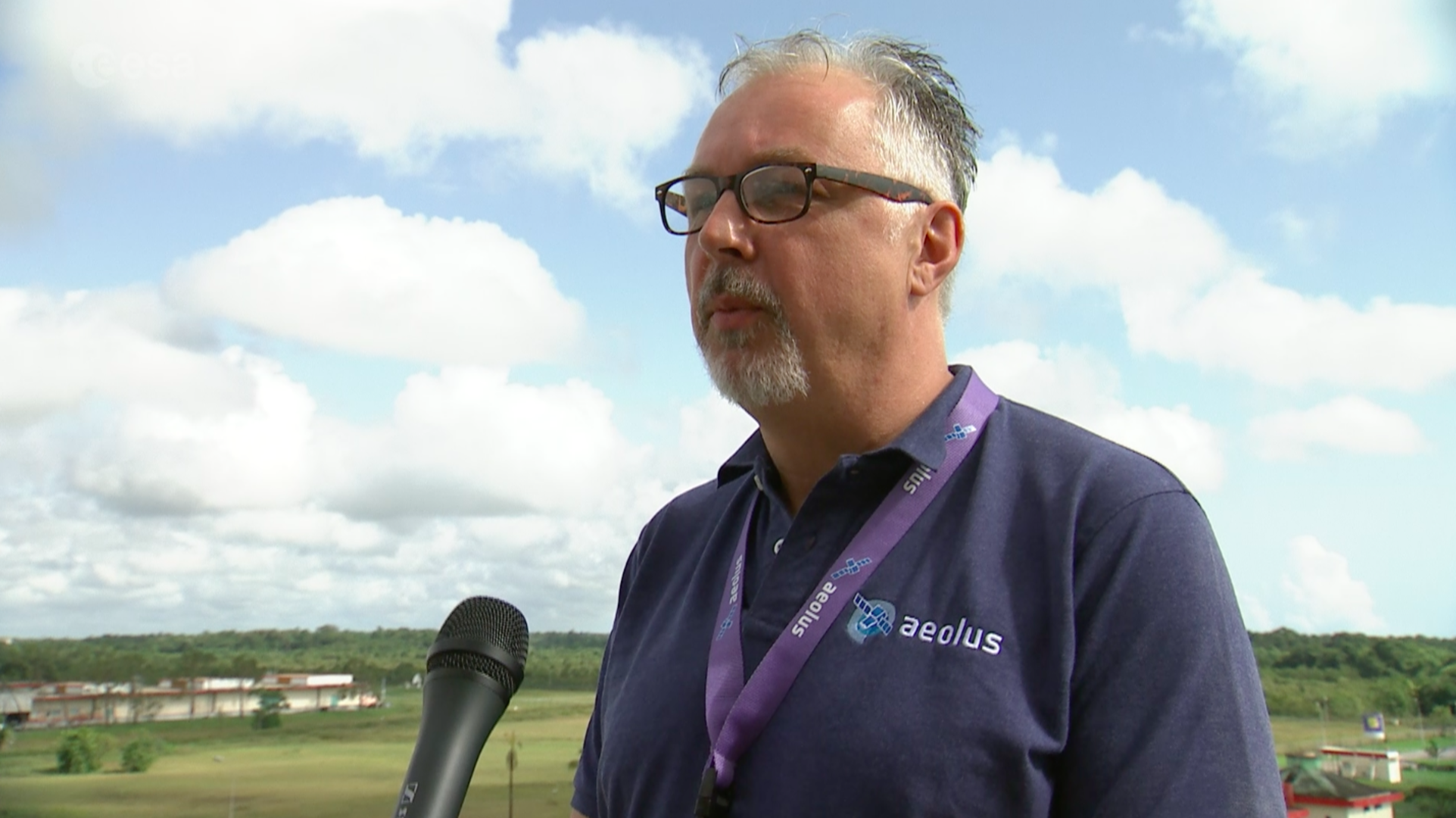
Access the video














 Germany
Germany
 Austria
Austria
 Belgium
Belgium
 Denmark
Denmark
 Spain
Spain
 Estonia
Estonia
 Finland
Finland
 France
France
 Greece
Greece
 Hungary
Hungary
 Ireland
Ireland
 Italy
Italy
 Luxembourg
Luxembourg
 Norway
Norway
 The Netherlands
The Netherlands
 Poland
Poland
 Portugal
Portugal
 Czechia
Czechia
 Romania
Romania
 United Kingdom
United Kingdom
 Slovenia
Slovenia
 Sweden
Sweden
 Switzerland
Switzerland



























